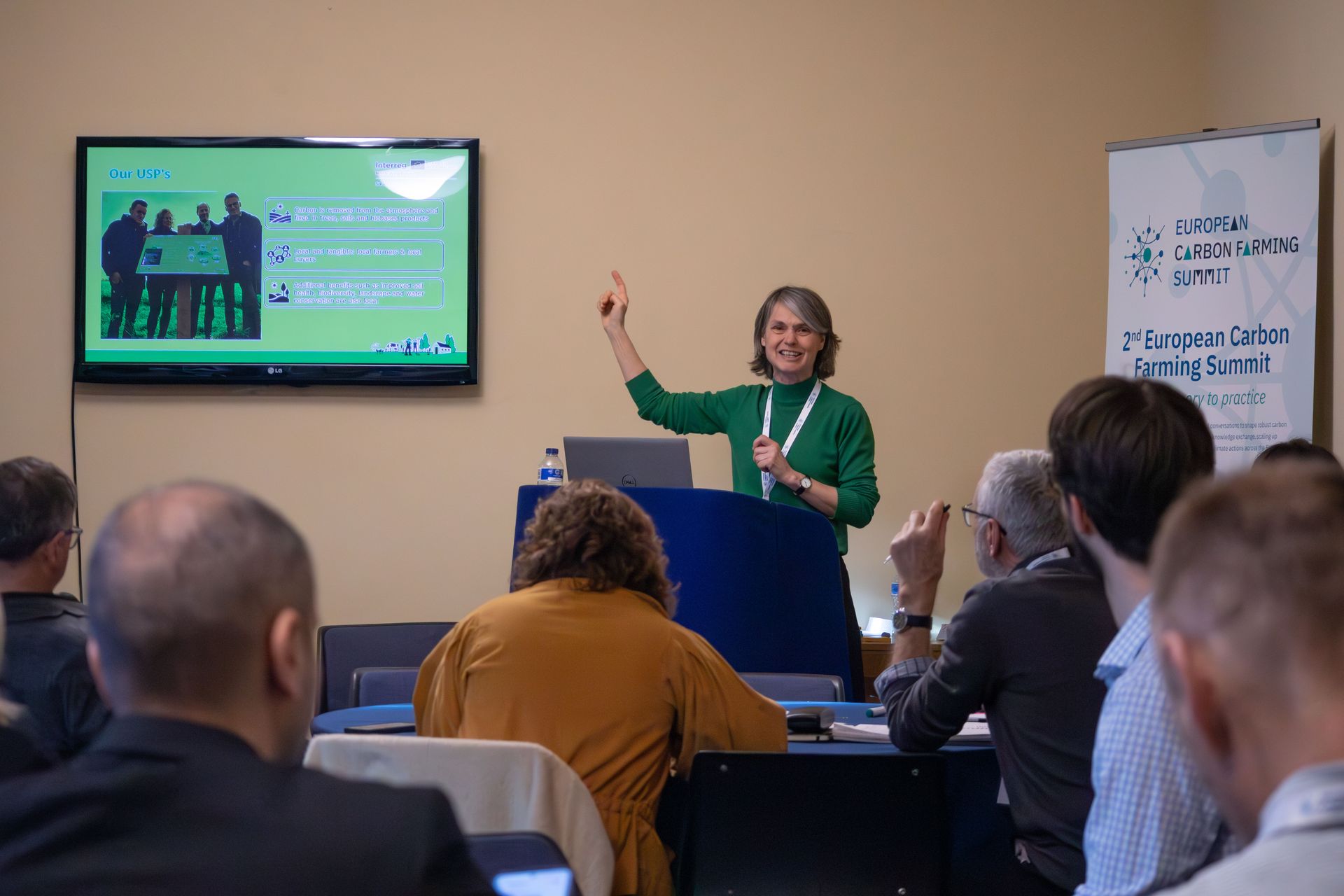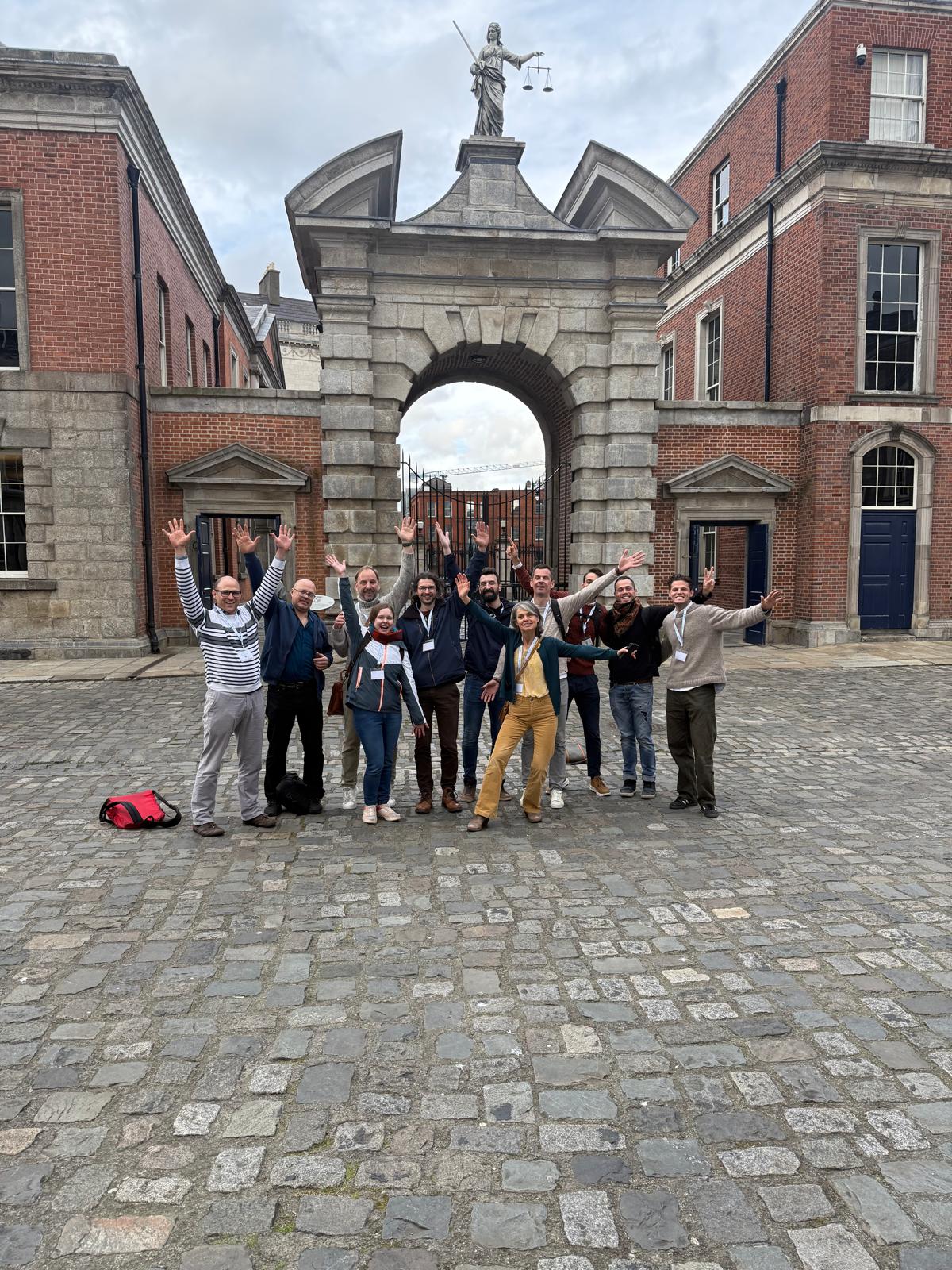At the European Carbon Farming Summit this March, the Smart Carbon Farming team hosted a workshop to explore the future of small-scale, regional carbon farming initiatives. Organised in collaboration with Boerenbond Projects (Belgium) and ZLTO (Netherlands), the session brought together farmers, project developers, buyers, and policy experts to spotlight on-the-ground experiences and shape a more inclusive and effective carbon farming future.
Why Focus on Local Projects?
While the EU’s Carbon Removal Certification Framework (CRCF) is still in development, many small-scale carbon farming projects are already delivering real-world results. Initiatives like Go2Positive in the Netherlands and Claire in Flanders are building rewarding mechanisms tailored to their regional contexts - each using different methodologies for monitoring, reporting and verification (MRV), and building direct relationships between farmers and buyers. These projects demonstrate that bottom-up initiatives can be powerful incubators for innovation and trust in the emerging carbon farming space.
But participants voiced a common concern: will these smaller, locally grounded initiatives survive in a future shaped by a centralised, standardised EU regulatory system?
Bridging Perspectives: Farmers, Buyers, and Policy
The workshop included an interactive brainstorm on three pressing questions:
How will CRCF impact small-scale collaborations?
Many participants welcomed CRCF as a needed step to build trust and standardisation, especially for buyers. However, there was widespread concern that if it creates heavy administrative burdens or high MRV costs, it could squeeze out smaller projects that currently thrive on simplicity, trust, and personal relationships. A key message was clear: CRCF must leave space for lighter, tailored certification options that preserve the viability of local initiatives.
How do we better connect farmers and investors?
Both groups expressed a desire for more transparency, trust, and stability in carbon markets. Investors valued the tangible, personal nature of small projects, which feel less risky and more connected to community goals. Farmers, meanwhile, are motivated by soil health and sustainability, but financial incentives remain critical to justify the time and effort required. Concerns around insetting markets, their willingness and capacity to pay rewards, and short-termism in pricing models also emerged.
What do farmers really need to participate?
Farmers emphasised that their motivation often begins with soil health and environmental stewardship. Many early adopters see carbon farming as a way to enhance farm resilience. However, scaling participation will require more robust, dependable revenue streams and clearer communication around how different carbon models (insetting vs. offsetting) interact with broader policy frameworks.
Key Takeaways and Policy Recommendations
- Recognise and reward early adopters. Farmers who have already improved their soils need to know their efforts count under CRCF.
- Tailor certification to scale. A separate, simplified MRV track for smaller initiatives could keep participation accessible and costs manageable.
- Clarify policy alignment. Farmers and buyers need clear information on how CRCF will intersect with other EU policies like CSRD, AFOLU targets, and national climate plans.
- Preserve the local dimension. Buyers value the proximity and trust that comes from knowing the farmer behind the carbon credit. Future systems should strengthen, not undermine, these relationships.
Looking Ahead
As the carbon farming space evolves, it’s vital that local voices continue to shape the rules. Projects like Claire and Go2Positive show that meaningful carbon farming can grow from the ground up, provided policies and systems are designed to support them. By facilitating open dialogue between farmers, buyers, and institutions, workshops like this help ensure that the carbon farming transition is not only scalable, but equitable, diverse, and rooted in real landscapes.


